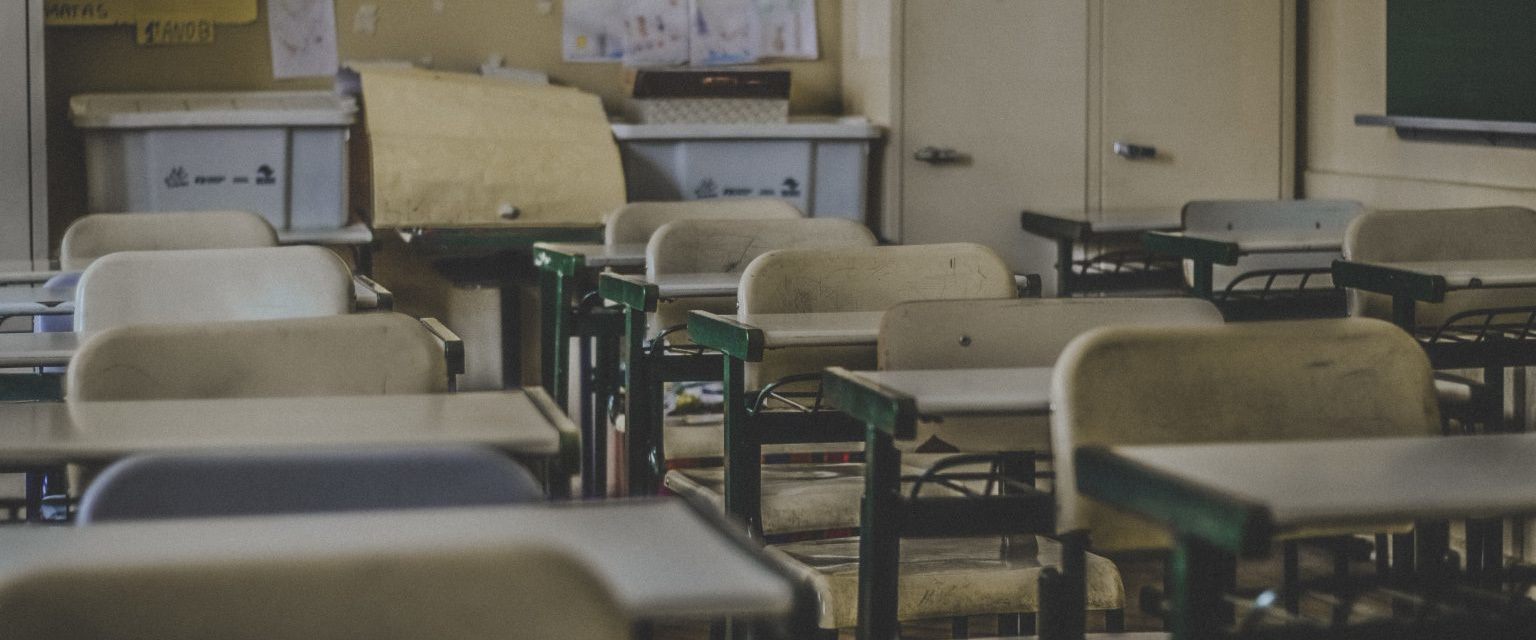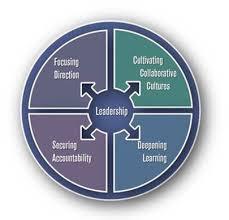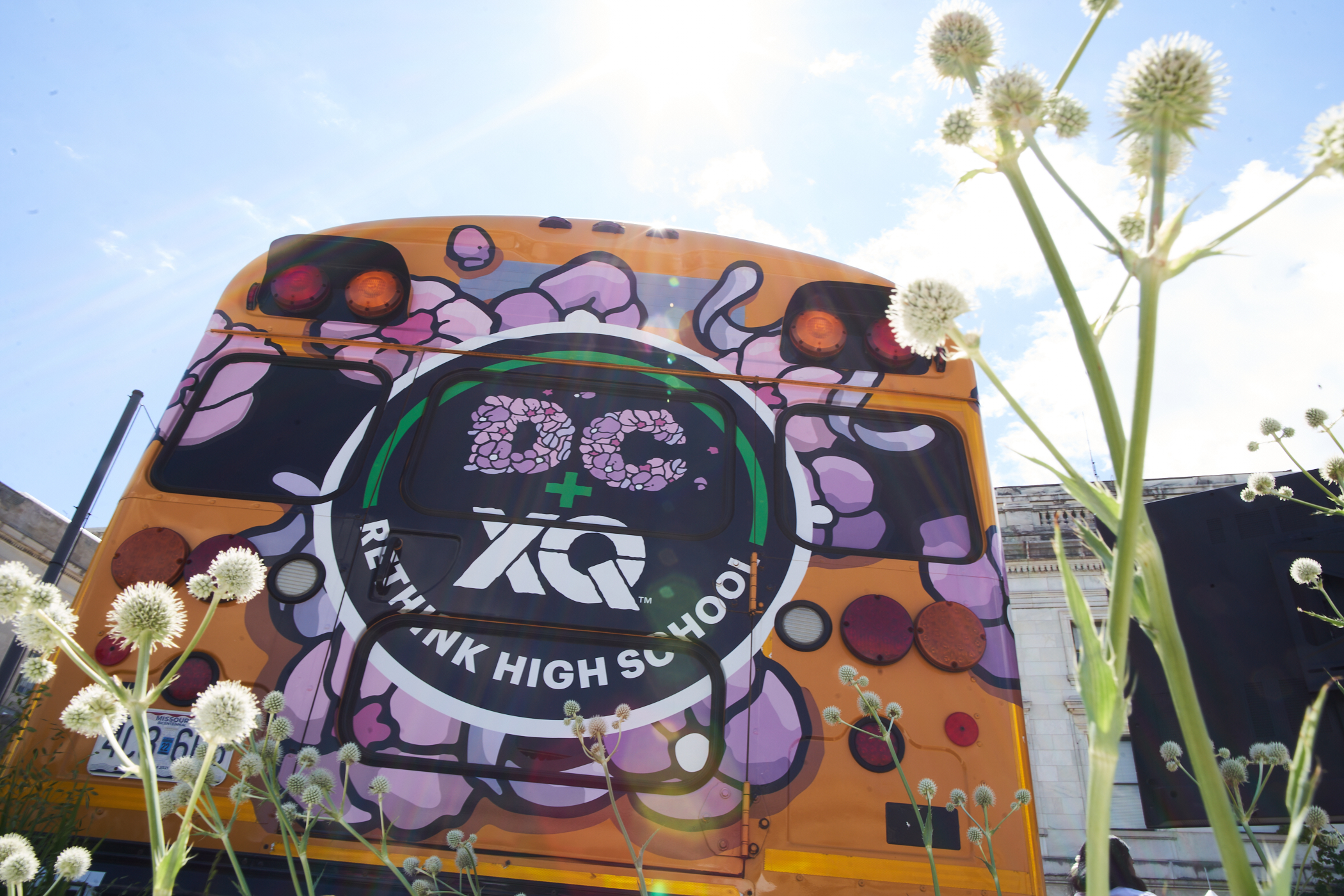8 Tips From School Leaders to School Leaders on Remote Learning
School leaders across the country had to adapt to remote learning in major ways due to COVID-19. Here’s a few tips our leaders have learned so far.

Throughout the COVID-19 pandemic, we’ve seen school leaders provide compassionate and level-headed leadership even when their school’s future is clouded with uncertainty. They’ve navigated unprecedented challenges with stoicism, optimism, and ferocity. They’ve worked tirelessly to maintain regular schedules, create accessible and inclusive remote learning environments, and ensure that every student, educator, and school staff member feels supported and prioritized during school closures.
We at XQ are constantly looking for how-to’s, tips, and advice from school leaders navigating this crisis in real-time so we can share some of our findings with you. Our earlier blogs focus on how teachers are adjusting to remote learning, what remote learning might signal for the future of learning, and how the student’s role in learning is shifting.
Now, we’re focusing on school leaders and sharing their strategies for building and sustaining supportive school networks remotely in order to maximize learning for students. As always, it’s imperative for school leaders to build inclusive schools with strong systems of support for students and teachers. Because school closures make this all the more important, we spoke directly with school leaders about how they are connecting with students and staff.
Their answers are grounded in practice and inspired by Michael Fullan’s and Lyle Kirtman’s Coherent Leadership book and their insights regarding effective leadership. Fullan’s original leadership framework includes four key competencies: cultivating a collaborative culture, deepening learning, focusing direction, and sharing accountability. Fullan’s themes of collaborative culture and deepened learning for students are of particular importance for school leaders during remote learning.
We’ve compiled the best insights from four XQ school leaders. Please enjoy, read, and share!

Cultivate a collaborative culture by supporting staff
Here’s what we heard from school leaders about building strong connections among staff, which are essential for effective instruction and building individual and collective capacities.
Personalize feedback to staff members with a laser focus on the learning.
Executive Director Chris Terrill, Crosstown High: “There is a real opportunity in the remote environment to personalize support for staff members. As school administrators, we are pulled in a lot of different directions from lunch duty to building maintenance to student discipline—100 different things. The remote environment has allowed us to slow down and focus on teaching and learning at a higher level. This has allowed us to analyze their delivery and give teachers meaningful feedback on a regular basis with a depth that wouldn’t have existed on a normal basis. We’ve begun to take deep dives into this feedback and have started giving teachers more meaningful and productive feedback than we probably ever have otherwise. This has allowed us to focus on where each teacher is at and provide them the support that they need. For some that may be pedagogical coaching, but for others, it is as simple as emotional support. This has given us a great opportunity to refocus on the learning and supporting each other.”
Create space to plan, process, and have fun.
Principal Lilian Hsu, Latitude 37.8 High School: “At Latitude, our staff meetings and their space in our schedules are sacred. On our Friday meetings, we include staff-led sing-alongs, meditation, and yoga to make sure folks are still moving and having fun together. We’ve decided to maintain the routine and ritual of daily team meetings remotely, which is also important. We’ve also been trying out different configurations, so the meeting isn’t just a bunch of talking heads. Our teachers really like the dialogical interview protocol. For instance, we had them read an article about anticipatory grief and then broke teachers into pairs so they could have a chance to process their feelings without judgment and without feeling an obligation to respond.”
Support staff members through virtual flexibility.
Principal Steven Stapleton, Furr High School: “We’ve found that well-supported teachers are the ones who best improve the outcomes for our students. And, in order to best support our teachers, we’ve transitioned the way we think about how we meet. Switching to virtual meetings has offered some benefits. For instance, during our weekly content team meetings, I can jump between several meetings during the hour. As principal of a large comprehensive high school campus, it was hard for me to physically get to each space (even with my background as a marathoner!). Also, we’ve seen an increase in participation in our school-wide design team—the group that is responsible for developing our strategic plan and outlines our goals. The virtual access and flexible times have allowed us to bring more people into the fold. We are proud because everyone is involved in something beyond their own classes. Finally, remote learning has given all of us the opportunity to connect with our colleagues in new ways and highlights the importance of meeting and checking in with each other. Just the other day I heard from two teachers who would usually meet in the staff lounge during their preps to hang out and plan together. While they can’t physically do that anymore, they are conducting daily virtual calls to do the same. The continuation of that informal routine touched my heart. It showed me that there are new ways to meet and gives value to these conversations that we may take for granted.”
Continue with daily huddles and professional learning communities.
Principal Shatoya Ward of Purdue Polytechnic: “We still regularly hold what we call professional learning communities (PLC) meetings with staff. This is the time where we learn and plan together each week and these have continued without missing a beat—we just all meet virtually. Our instructional coach, Drew Goodin, walks through what the day looks like, highlights what data we need to emphasize with our students, and features design project plans and logistics. We even plan for supplies and materials that may need to be delivered to students given our hands-on STEM focus.”
Deepen student learning with a relentless focus on meaningful connections
Deepening student learning is of course at the heart of successful school change. Here’s what leaders had to say about that component in this transitional time.
Encourage student engagement through effective learning strategies.
Principal Lilian Hsu, Latitude 37.8 High School: “Our leadership team designed structures for students that maximize engagement and encourage creative practices. For instance, we’re doing video conferences in small groups—around five to eight students—which allows the students to have a lot of air time and to participate in the discussion. That means that in humanities classes, students are engaging in Socratic seminars. In math, they are solving collaborative problems with positive interdependence strategies. We are trying different thinking routines as well. We want students in this climate to have the opportunity for collaboration, discussion, and built-in routines and rituals that challenge them cognitively. We also want students to feel creative and self-expressive as they undertake the design projects that they will complete by the end of this year.”
Create connections through structured planning and protocols.
Principal Shatoya Ward of Purdue Polytechnic: “Before the switch to remote learning, our students already utilized a virtual calendar to track their class schedules. This early adoption has allowed us to transition to the remote setting easily. Classes that were already set on student’s calendars have a virtual meeting link attached to it now. It makes it incredibly easy for students to connect virtually. Additionally, we already use technology to assess students’ work before this remote switch. Of course, there were some things we’ve had to adapt to a remote platform. For instance, our coaches have found creative ways to engage our students in fun things. They do a virtual fit club with students, which has been really awesome. We’ve found that students miss just hanging out with each other. We’ve seen students share student-led activities virtually, and that has been really inspiring. It is fantastic what is happening with staff and incredible how our students are engaging in this virtual community.”
View the current circumstance as a design challenge for new learning practices.
Principal Steven Stapleton, Furr High School: “Everyone’s learning environment has changed. COVID-19 disproportionately affects low-income communities of color, which is our community at Furr High School. So our approach to this crisis has to be different than that of a school with a different student body. We have to be comfortable with the real-time needs of our students. We have to be flexible. We are constantly checking the log-in patterns of students. If we find that they are not online, we ask ourselves: does this student have the devices they need? Is there an SEL need? Is something not being filled? This crisis has forced us to be investigators in order to create an inclusive remote environment.
Additionally, in order to connect with students, we’ve had to take innovative approaches to support teachers. For instance, our teachers range from first-year teachers to teachers who’ve been teaching for years, and with that range comes a lot of variety. Technologically speaking some of our teachers are stronger than others. It’s important to acknowledge that range in expertise and to have our teachers work together. In fact, we are pairing our teachers together just like we are pairing our students.”
Establish structures to support all learners, and be sure to focus on strategies for the most vulnerable.
Executive Director Chris Terrill, Crosstown High: “How do we best support exceptional learners during COVID-19? That’s a really important question to prioritize. We’ve made that question one thing that guides us through this moment. For instance, at Crosstown we have a special education director, who is incredible at creating and executing plans. For instance, she creates weekly plans every Thursday and spends the weekend honing in on those plans and developing schedules for students. From seven in the morning until six at night, she is getting on the phone and working with students to make sure that they are not falling through the cracks.
We also have spent time dealing with at-risk students. We’ve made sure that every student is connected, by deploying mobile hotspots for students without Wifi and by giving each student an iPad. But, proper support is more than just addressing technological needs—although that is a necessary first step. We know that teachers aren’t standing in front of a classroom right now and that the personable aspects of school have kind of disappeared. So, it’s important for teachers to focus on personal relationships and give their students more direct facetime.”
Look Ahead
While there is still much to do to support teachers, students, and staff during remote learning, it’s never too early to look to the future and plan for the challenge of reopening. At Latitude High School, staff members got their thinking underway at a staff meeting by reading and discussing an article about school openings in Denmark. The transition, when it comes, will demand compassionate leadership and inclusive thinking to ensure continued focus on meaningful learning for all students.
We know that we are just in the beginning, but school leaders continue to amaze us with their dedication and resilience. Tell us how your school leaders are providing stability in this crisis or fill out our guest blog form if you’d like to share your story.









